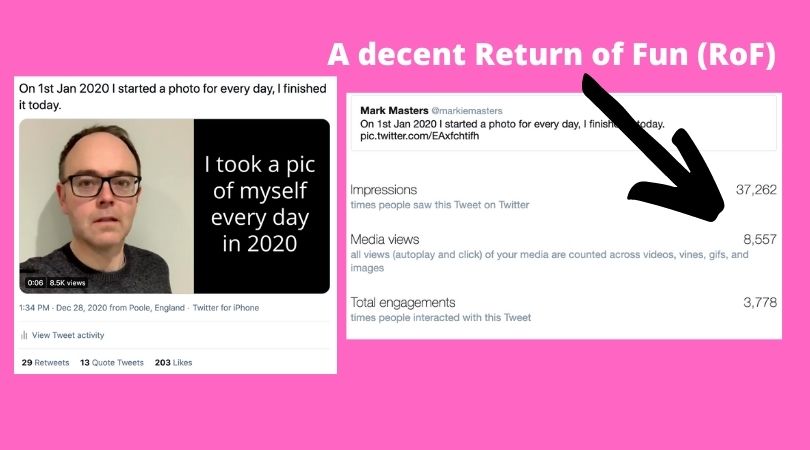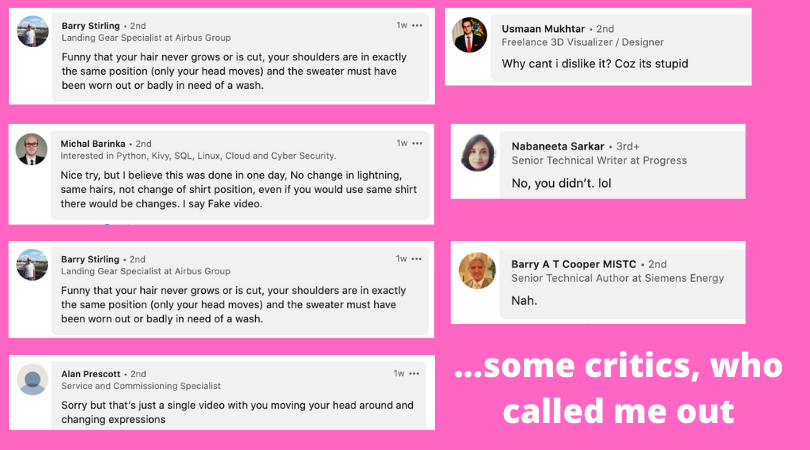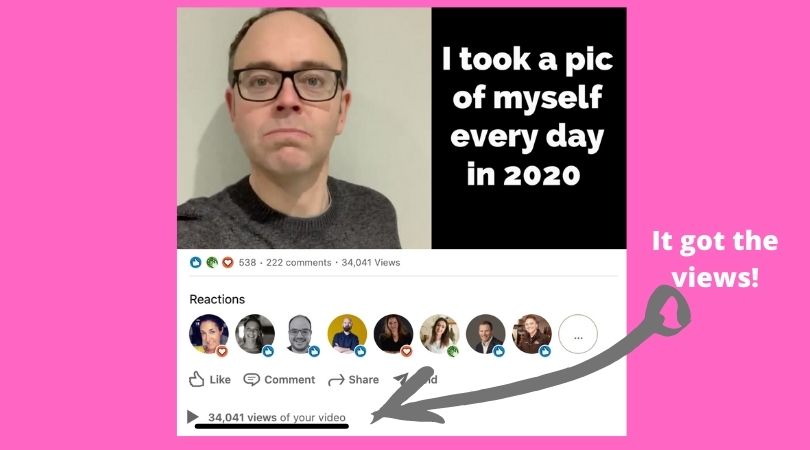Discovering The Anti Content Approach

When you let your guard down and have fun, some people will call you out whilst others will move in even closer to you.
In this article I am championing anti content. I explain what it is, show why people don’t just want more facts and information, and highlight what you can do to get in on this.
As we start the year, it’s time to hit refresh and stand out. Let yourself go and accept that you won’t know the impact of anything you create until you publish, so let’s have fun in putting it out there.
What Is Anti Content?
Anti content is a means of delivery that goes against everything else a platform encourages you to be and is the polar opposite of what pretty much everyone else is doing.
You achieve attention and engagement by entertaining people. Whatever emotion you draw – it will be a powerful one. It doesn’t have to be one that provokes deep thought because laughter is important too. A child laughs on average 300 times a day, whereas adults only laugh on average 17 times a day. Somewhere along the line, people lose that capacity and freedom to smile.
Anti content represents you standing out against a platform’s accepted professional protocol. It also means that you have to be ready for there being a backlash.
You have to be comfortable with knowing that some people will turn away from you and also understand that, at the same time, others will feel closer to you and will want to know you better.
The start of 2021 is very tough for everyone. If all you want to do is deliver industry rhetoric and pretend you have all the answers, then that’s fine. But do we really need to be sharing more second or third-hand positivity quotes or self-congratulatory press releases?
What you can do instead is reach even more people by letting your guard down.
This can produce a return for you where it works like this:
💥 Social media provides you reach and a stage from which you can entertain
💥 It draws people to your home space i.e. your website, where they can get to know the real you when they, for example, subscribe
The Return On Fun (RoF) – A Case Study
Let me put anti content in a real-world context. It is something that flies against the norm but still has reach because people find it fun and derive meaning from that. Lets call this the RoF (Return on Fun).
On Saturday 26th December 2020 I stood in the utility room of my house and pulled funny faces into my phone and shared it with a WhatsApp group saying it was a selfie time-lapse of every day in 2020. A friend said I should put it on social media. I hadn’t originally done it for sharing on social media at large, it was just something for friends to have fun with on a Saturday afternoon.
Here it is….
On Monday 28th I decided to post it on Twitter and it went down well, particularly as compared to my ‘normal’ video and post views, amassing 8,557 views.

On Thursday 31st I decided to give it a whirl on LinkedIn (here it is). I thought, “Let’s see how this goes down with the professionals.” The stats were encouraging with over 34,000 views but it was just the start of what could happen with taking an anti content stance.
By sharing content that didn’t fit the mould of business insight on the LinkedIn platform, people started calling me out as a fake.
The whole exercise had been done, tongue-in-cheek, as a piece of fun with a caption that told people “not to cut corners” which was exactly what I’d done. For those that didn’t get it – it was soon obvious that we would never be having fun in the same room together.

What I want to share with you here is that content doesn’t always have to be informing, solving problems or persuading. You don’t have to be creating work just to please people. Have some fun and see who joins you and wants to be a part of it too.

Lessons I Took From This (& The RoF)
Here is what I took from publishing something I wouldn’t normally put out there but which, at the same time, shows something of who I am.
Don’t be afraid to look stupid (or be called out).
The more people there are competing for attention with you, the more standardised the competition metrics become. This is where there is a real opportunity to stand tall and not be afraid to be different. As long as you are not abusive or gratuitously outrageous, you have nothing to lose.
You will never know if your content will hit or miss until you publish.
The longer you sit on something and deliberate whether or not to share, the less chance there will be of others seeing it. It pays to put your best foot forward and share. If it’s ignored, you just move on. Sometimes the only thing holding you back is yourself!
It can still lead to conversion.
A strong conversion metric is turning passive viewers into subscribers, not just basking in the glory of having views (read more here on the importance of having subscriber aims). The faces of 2020 post drew many connection requests which I then turned into invitations for the new connections to come and join the You Are The Media community. So, what started as a social media post became a way for me to say hello and invite people to subscribe.
You are just as important as the content.
Showing a side of you that is completely open for others to judge, but doing it with a smile, proves that the person is just as important as the content. You Are The Media Month Of Learning teacher, Mark Schaefer highlighted in this article where he said, “One of the other things I’m learning is that often, the point of differentiation isn’t the type of video you create, or how often you produce a podcast, it’s … you.”
It doesn’t matter the emotion, it’s still powerful.
People feeling something from what you produce is on a different level from them scrolling past what you post. A study by Fractl highlighted that the virality of content is linked to positive emotions (namely humour). Finding ways to bring humour into your work is powerful and helps you be seen as relatable.
Don’t choose to create commodity work that just fits in.
If all you are doing is sharing work that has no guts, no personal stamp, perspective or viewpoint, the creation process will be less enjoyable for you too. If you are producing work that you enjoy, people are going to feel that.
What You Can Do?
Whilst I don’t have a list of the types of content you can create to go viral, what I do know are some steps to keep the fire going so it burns for many days after you initially publish.
Reply to people.
Rather than just giving comments a “like”, I made sure I replied to everyone who commented. I didn’t want to be the person who posted and then walked away like a meme hero. As well as being courteous to the person who comments it also means more people get to see your (anti) content and are then more likely to end up coming over to your side and subscribing.
Be in on the joke with everyone.
If you made something that was fun, make sure that you can laugh at it with everyone else. If people can see you’re enjoying things snowball, you stand a better chance of connecting with people who have things in common with you.
Don’t reserve your fun side just for ‘stories’.
As a test, I put the video on Instagram Stories. This was the first place I went after the WhatsApp group. It got lots of laughing emojis, disappeared after 24 hours. Don’t create work for it too disappear too quickly.
Bring yourself, not a GIF.
If you can be natural, know that you don’t need a funny jpeg or meme to get a point across. We are all in a bit of a mess at the moment, look at it as a way to connect with people in a very real way.
The more something is about your industry, the less it performs.
The majority of what I share has a marketing theme running through it but breaking it up with something completely unrelated and intended to be joyful, put the post into places I’d never been seen in before. Think about breaking up what you share with glimpses of material different to what you normally share.
Let’s Round-Up
Anti content works by delivering content that is different from how the majority of people conduct themselves within a media platform.
It may not even link to what your business does, but it does let you, and not your content, take centre stage. Ultimately, self-mockery is a way to show more of who you are as a person.
Don’t assume that everyone will embrace what you’re sharing – life, and social media are just not like that. We are all navigating difficult times and we are all imperfect so it’s ok to point at ourselves, laugh and encourage others to laugh.
Podcast: Play in new window | Download


